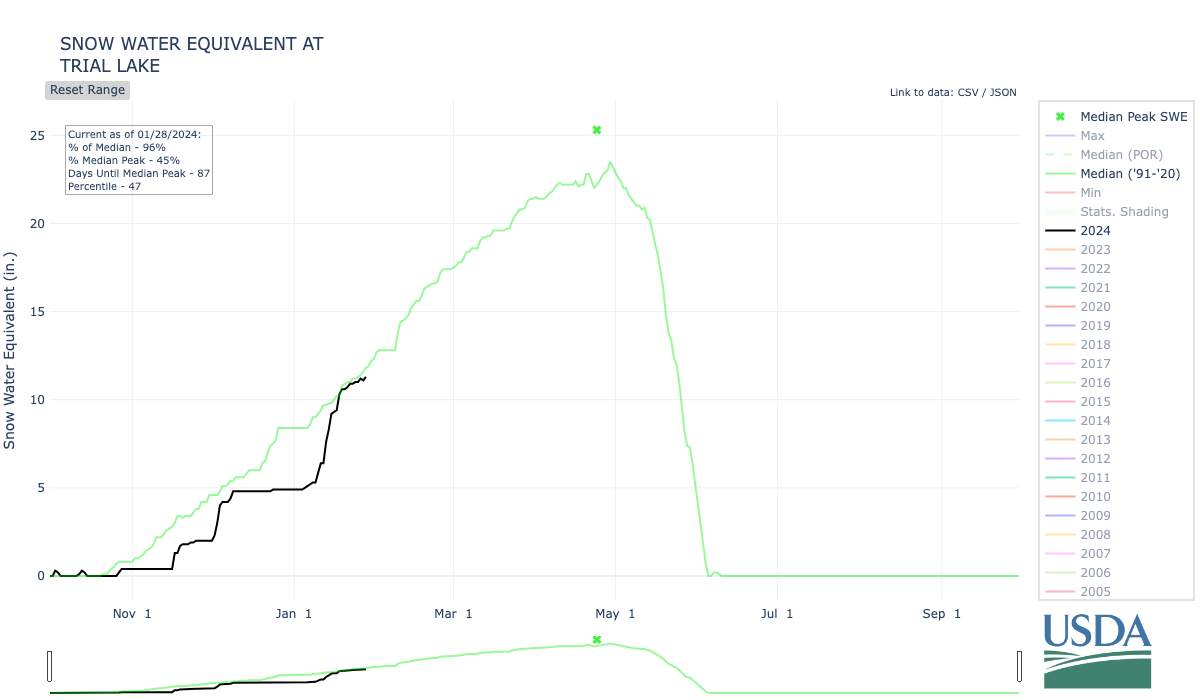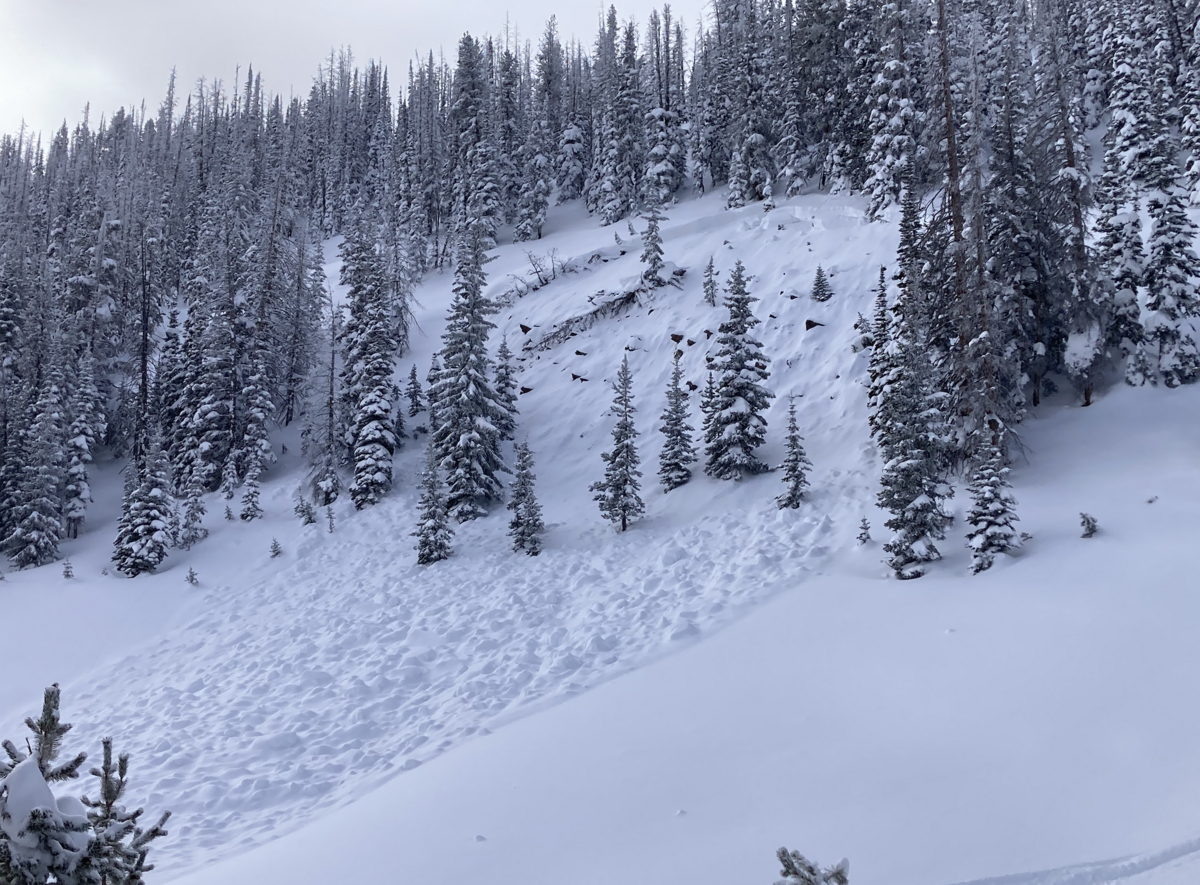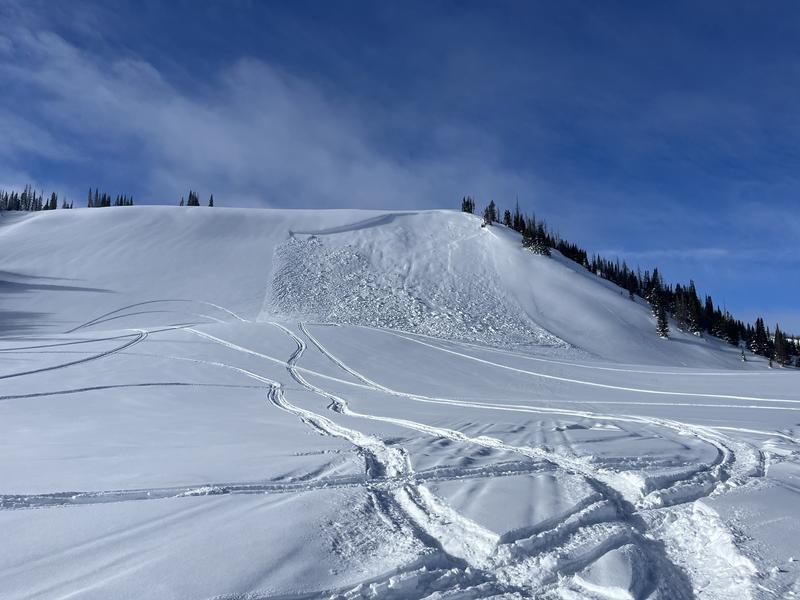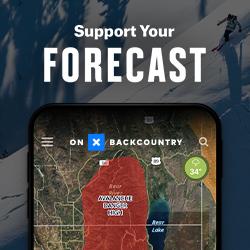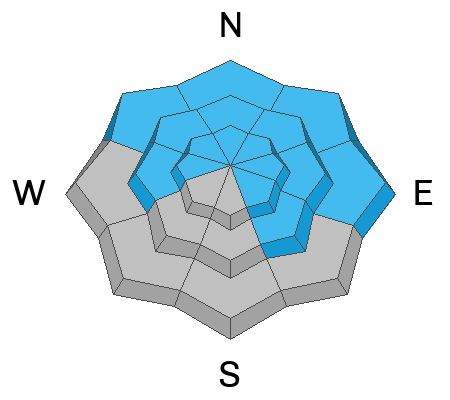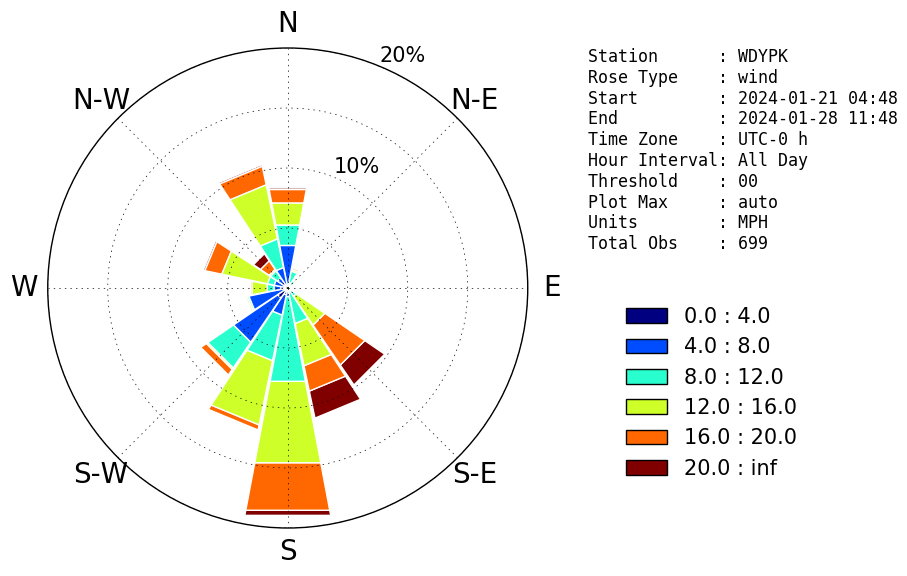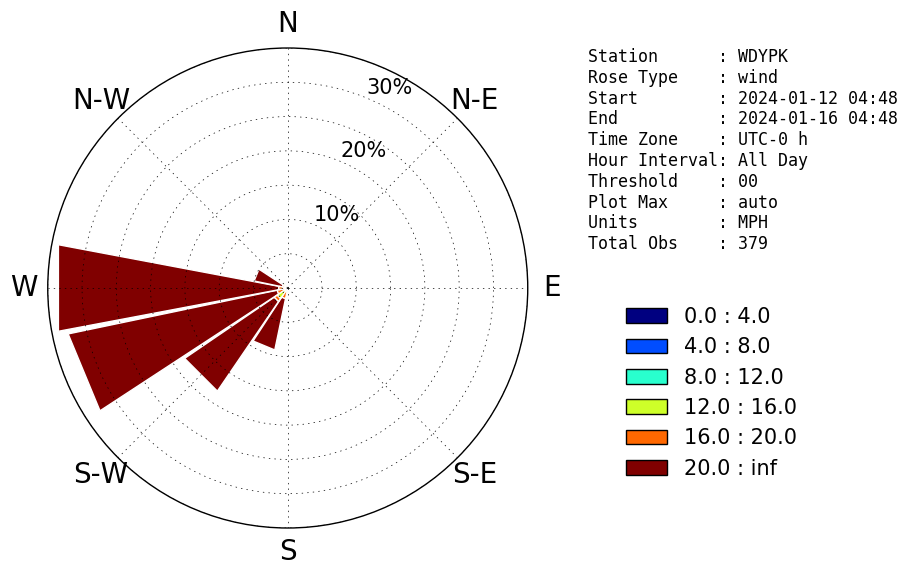Forecast for the Uintas Area Mountains

Issued by Mark Staples on
Sunday morning, January 28, 2024
Sunday morning, January 28, 2024
Please don't forget that just two weeks ago, the avalanche danger was extreme and avalanches were crashing down everywhere. The layers responsible for those conditions are still present in the snowpack.
Today, because the likelihood of triggering a slab avalanche on buried persistent weak layers has lessened, the avalanche danger is MODERATE on all slopes facing north through east as well as slopes facing west and southeast near and above treeline. The danger is LOW on slopes facing south and southwest.
This is not a normal moderate danger. I remain very hesitant to mess with avalanche terrain - even though the odds of triggering a slide have dropped, the consequences remain the same - deadly. If you do decide to "step out" a little bit and expand your terrain choices, aim for places with a deeper snowpack and a clean runout zone free of trees and rocks that will cause major trauma. It may be counterintuitive, but places with thinner snow are the most likely places to trigger a slide that can then fracture into deeper areas.
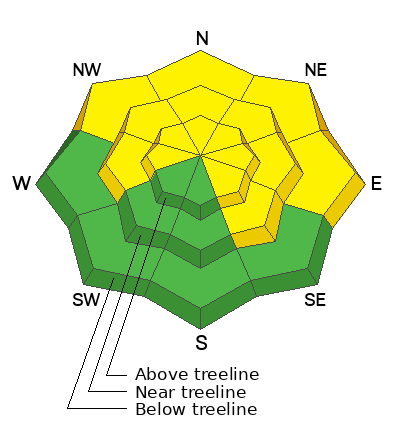
Low
Moderate
Considerable
High
Extreme
Learn how to read the forecast here



